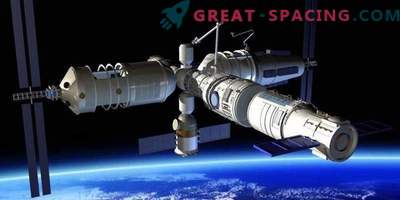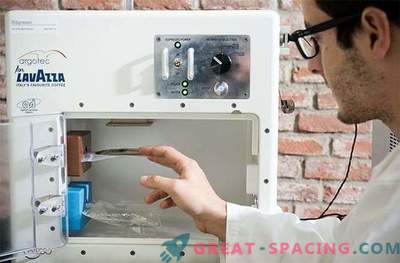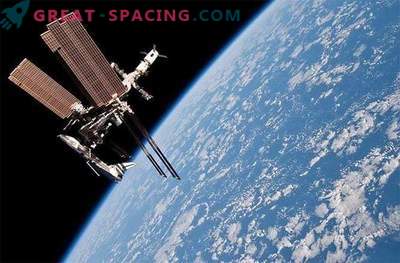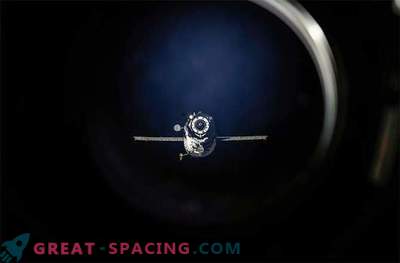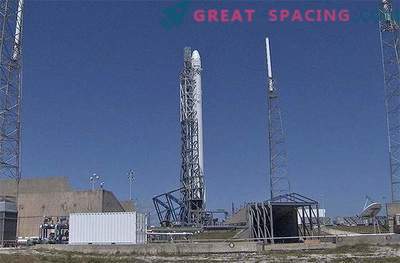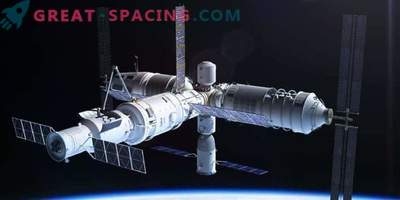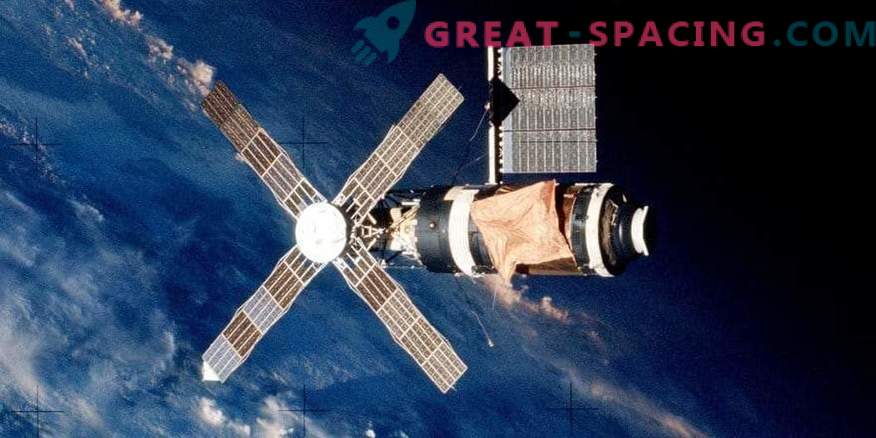
When the crew of Skylab-2 departed, a golden solar shield covered the main part of the space station. The solar battery at the top was the one that unfolded during the spacewalk. Four solar blocks resembling windmills are attached to the telescopic array of Apollo used for solar astronomy.
Before the modern ISS orbital station was in orbit, several Soviet predecessors of the Salyut program took its place. But what happened to the American station and why it could not be saved?
First American station in orbit

On September 29, 1972, Skylab space station attached with a Saturn-5 rocket in a vertical assembly building.
In 1973 the orbital station Skylab (Skylab) first appeared in orbit. It was an American project for various studies in the fields of technology, medicine and biology, as well as to observe the planet.
Before you is also the first NASA project to study the influence of the space environment on the human body. Scientists wanted to prove that humans are able to spend a long period of time in space, studying the stars, solar activity, and the effects of microgravity on living organisms.
Interestingly, NASA never tried to call Skylab space station. Instead, “orbital workshop” was used. The fact is that management was hoping to get funding for a larger and more expensive project and did not want the government to consider a cheaper option (Skylab) as an attractive alternative.
What the station looked like

Before launching in May 1973, the Skylab space station (in the foreground) awaits a launch at the top of the Saturn-5 rocket. The design is located on the launch pad of the Kennedy Space Center. On the north side, the Saturn-1B missile with the Apollo Command Service Module is noticeable.
If we compare it with the models of the Soviet single-module Salyut station, Skylab was really large-scale. It covered in length about 25 m and almost 7 m in diameter. Another interesting point. Typically, large structures are launched into orbit in parts, and then assembled into a coherent whole. But Skylab launched a solid platform.
On one side was a docking port for two Apollo missions and a telescope. In fact, it was a full-fledged space observatory with equipment for solar imaging in the X-ray and UV ranges.
Missions and life at the station

On May 14, 1973, Skylab space station takes off from launch pad 39A on a Saturn-5 rocket.
At the station, there were only three expeditions with three people each (only 9 astronauts). Home goal - to study whether a person will be able to adapt to space conditions. In principle, Skylab was spacious inside, so you can move freely and even play. The wire mesh divided the space into a work area and residential sections. But not everything is so smooth.
The fact is that even during the launch into orbit the air flow tore off the meteor shield, grabbing one of the solar panels. Due to the damage, the second solar panel also could not turn around. Because of this, the internal space of the station began to heat up, and there was not enough power. It turns out that the astronauts had to spend a lot of time on repair, which they coped with successfully. What about life? If you have never been in space, then you would feel yourself in Spartan conditions. But after the close Apollo, the astronauts literally enjoyed the movements. The station had a shower and toilet, real food and even exercise equipment. In his free time, he was allowed to read and listen to music.
What happened to Skylab?
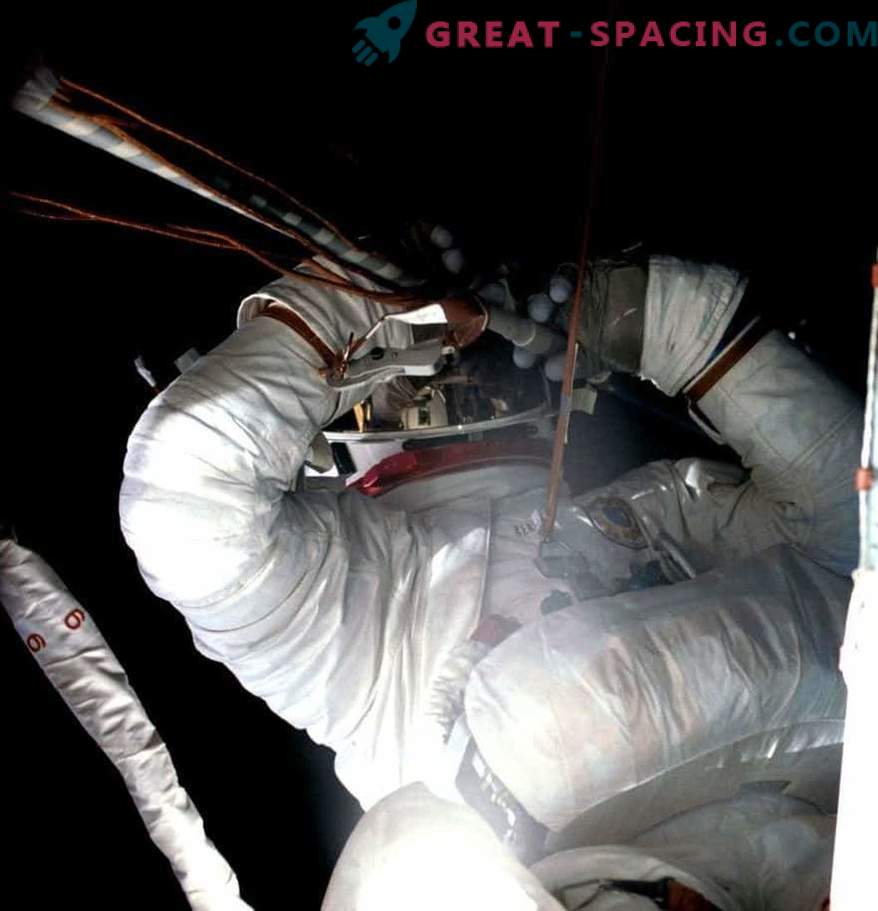
On June 7, 1973, during a space walk, astronaut Joseph Kerwin used a special cutting tool to remove a metal part, due to which a solar battery was jammed. He and Charles Conrad managed to fully deploy the solar panels and provide the station with electricity for three expeditions.
If everything is so good, then why did the American station accept only 3 missions? Scientists dreamed to keep Skylab in orbit and use it in the future for the next flight and research. In addition, the Saturn-5 rocket was no longer produced, so there was not a single means to launch another so massive construction.
Due to bureaucratic red tape, flights were delayed, and the station gradually began to decline. It was planned to send a special mission to level the structure in orbit. However, funding issues could not be settled.
The final blow came from space. Solar activity has increased, which is why an increase in atmospheric density has occurred at the height of Skylab. As a result, engineers missed the chance to gain height for the station. Skylab was doomed.
World panic and hunting
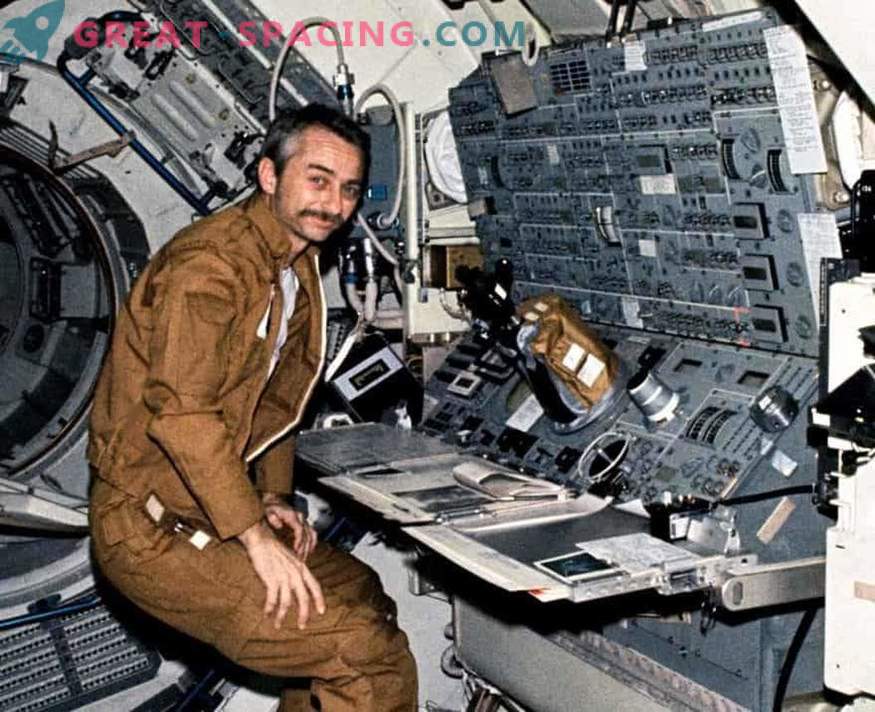
The scientist and astronaut Owen Garriott manages the Apollo telescopic installation from the console of the Skylab space station in the third mission. The main achievement of the program was solar research.
When you know that a 70-tonne construction is flying somewhere in the sky, it is hard for you to fall on your head. Many countries panicked. Moreover, in Europe and Asia they planned to create special methods of protection against falling.
It was predicted that the station would fall between the Indian Ocean and Australia, but literally everyone was worried. And then the situation changed and people began to discuss the possibility of getting a piece of station if it collapses to the surface and not into the water. One of the American newspapers offered a reward of $ 10,000. for the first fragment found.
Postscript
NASA did everything to coordinate the fall of the station just south of Cape Town in South Africa, where it was to collapse in July 1979. However, the process of destruction slowed down, due to which some of the debris fell on Australia. Many fragments were in museums, and a full backup of the station can be seen in the National Museum of Aeronautics and Astronautics (Washington).

